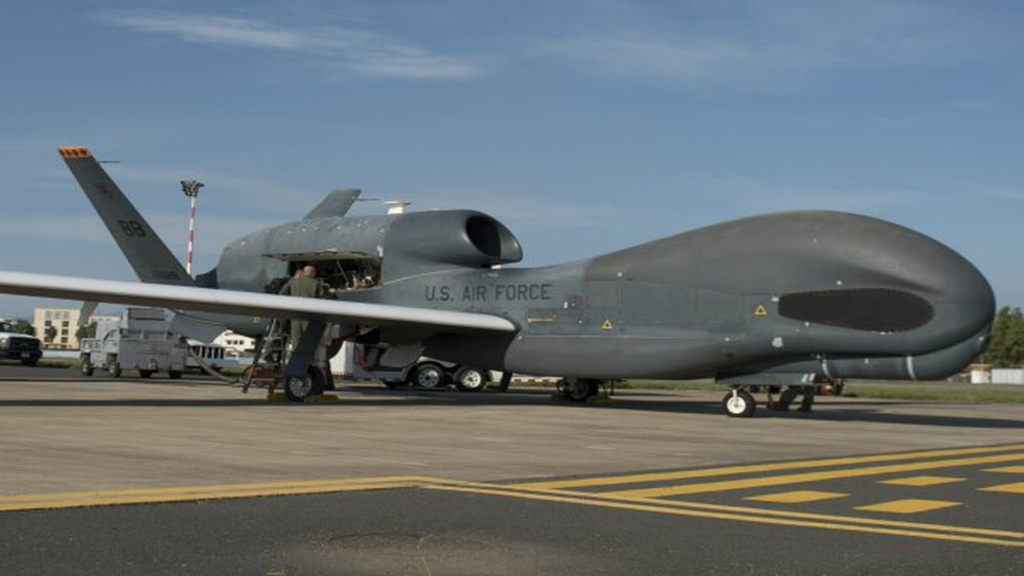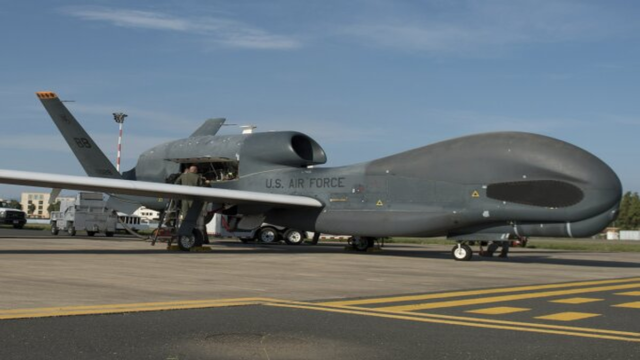April 13, 2025 | AyroTV News Desk
Tehran, Iran – Reports have emerged of heightened tensions between Iran and the United States following Iran’s warning that it may take action to neutralize a U.S. spy drone allegedly operating near its airspace. While no official confirmation of a drone being shot down has been released, the incident underscores the fragile state of U.S.-Iran relations and the ongoing geopolitical chess game in the Middle East.
A History of Drone Confrontations
The latest development follows a pattern of confrontations between Iran and the U.S. over unmanned aerial vehicles (UAVs). In March 2025, Iranian media reported that a U.S. MQ-4C Triton reconnaissance drone retreated from near Iranian airspace after being confronted by Iranian F-14 fighter jets and reconnaissance drones. Iran’s Nournews, citing the country’s Army Air Force, claimed the drone backed off to avoid escalation, with Tehran issuing stern warnings of a “full-scale defense” if provoked.

This incident echoes a 2019 event when Iran’s Islamic Revolutionary Guard Corps (IRGC) shot down a U.S. RQ-4 Global Hawk drone, claiming it had violated Iranian airspace. The U.S. maintained the drone was in international airspace, highlighting the contentious issue of territorial boundaries in the Persian Gulf. The recurring drone disputes reflect Iran’s sensitivity to foreign surveillance and the U.S.’s reliance on UAVs for intelligence gathering in the region.
Current Tensions and Strategic Posturing
The reported threat to “shut down” a U.S. spy drone comes at a time of strained diplomatic relations. Recent talks between the U.S. and Iran, mediated in Oman on April 12, 2025, were described as “constructive” by Iran’s Foreign Ministry, focusing on nuclear issues and sanctions. However, Iran’s rejection of direct negotiations with the U.S. in March 2025, in response to a letter from President Donald Trump, signals ongoing mistrust.
Analysts suggest Iran’s rhetoric may serve multiple purposes: deterring U.S. surveillance, rallying domestic support amid economic challenges, and asserting regional influence. The IRGC has showcased advanced air defense systems, including the 358 loitering surface-to-air missile unveiled in January 2025, designed to counter drones and low-altitude threats. Such displays signal Iran’s capability to back its warnings with action.
Meanwhile, the U.S. continues to deploy drones like the MQ-4C Triton for long-range reconnaissance, monitoring Iran’s military activities and its support for proxies like the Houthis in Yemen. President Trump’s March 2025 statement, attributing Houthi attacks to Iran and threatening “dire consequences,” has further inflamed tensions, raising fears of miscalculation.
Regional and Global Implications
A potential drone shootdown could have far-reaching consequences. Iran has warned that violations of its sovereignty could “set the entire region ablaze,” pointing to the vulnerability of U.S. bases and allies in the Middle East. Past Iranian attacks on Israel, though causing minimal damage, and Israel’s subsequent destruction of Iranian air defenses, illustrate the region’s volatility.
For the U.S., losing a drone could prompt retaliatory strikes, as seen in previous administrations, or fuel domestic debates over military engagement in the Middle East. Negar Mortazavi, a Senior Fellow at the Center for International Policy, told Newsweek in March 2025, “There is no appetite in America to start another endless war in the Middle East,” suggesting public fatigue could constrain escalation.
Globally, allies and adversaries are watching closely. China and Russia, which maintain ties with Iran, could exploit any U.S.-Iran clash to critique American foreign policy. NATO allies, already grappling with hybrid threats like mysterious drone sightings over European bases in 2024, may urge de-escalation to avoid broader instability.
What’s Next?
As of now, neither Washington nor Tehran has issued official statements confirming a drone shootdown. The U.S. Department of Defense typically refrains from commenting on active operations, while Iran’s state media often amplifies military posturing for domestic audiences. Without verified evidence, speculation must be tempered with caution.
The incident, real or rhetorical, highlights the need for diplomatic channels to prevent missteps. The Biden administration and now Trump’s incoming team face the challenge of balancing intelligence needs with the risk of provocation. For Iran, economic pressures and regional setbacks, including the fall of Syria’s Bashar al-Assad in 2024, may push hardliners toward confrontation to project strength.
AyroTV will continue to monitor developments and provide updates as more information becomes available. For now, the world waits to see whether this latest chapter in U.S.-Iran tensions will remain a war of words or spiral into something more.
Have a tip or comment? Contact our news desk at news@ayrotv.com.









